- Apr 12, 2023 Date of publishing
- 18 Pages
Introduction
Supercomputing reached a crucial milestone in 2022 with the deployment of Frontier, the first exascale supercomputer, at Oakridge National Laboratory (ORNL). Frontier runs at 1.2 exaflops (EF) of FP64 performance while consuming 21 megawatts. 2023 promises more of the same with the rollout of Aurora at Argonne National Laboratory (ANL), which is estimated to provide more than 2 EF of performance. Additional exaflop clusters will follow, driven by the ever expanding needs of compute intensive workloads such as quantum mechanics, weather forecasting, oil and gas exploration, molecular modeling, aerodynamics, nuclear fusion research, and cryptoanalysis.
Looking ahead to next generation supercomputers, the US Dept. of Energy (DOE), who runs several of the world’s premier supercomputing labs including ORNL and ANL, issued an RFI (request for information) in June of 2022 outlining their supercomputer requirements for the 2025 – 2030 timeframe. Key supercomputer requirements outlined in the RFI for 2025 – 2030 include the following:
- HPC Performance (FP64): 10 – 20+ EF
- AI Performance: 8 – 16x FP64 performance: 80 – 320+ EF
- Power Consumption: 20 – 60 MW
- Supercomputer area: 4,000 – 6,000 square feet
- 4,000 sq ft is area consumed by ORNL Frontier
- 6,000 sq ft adds a 1.5x multiplier to Frontier for future supercomputers
This paper provides an overview of the Tachyum Prodigy Universal Processor Family, summarizes how the Prodigy Family differs from existing processor architectures, discusses the Prodigy roadmap, and presents HPC/AI supercomputer data center designs developed by Tachyum’s world-class systems, solutions, and software engineering teams for the first two generations of the Prodigy Family, Prodigy and Prodigy 2. The system designs presented assume the requirements outlined above from the recent DOE RFI as a baseline for the 2025 – 2030 timeframe.
Figures
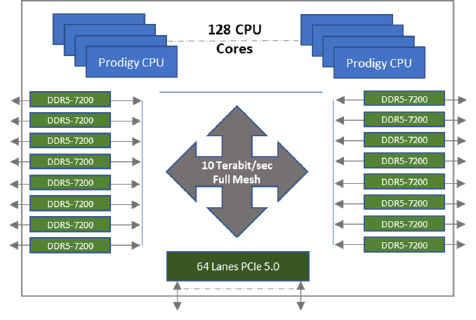
Prodigy Device Architectural Diagram 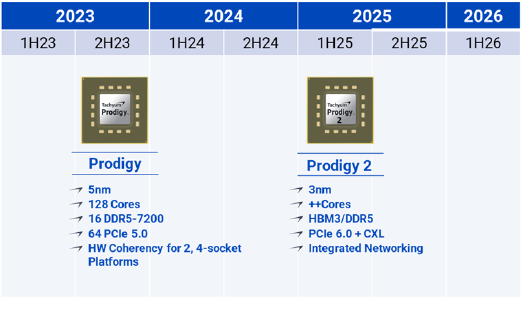
Prodigy Family Roadmap Showing Prodigy and Prodigy 2 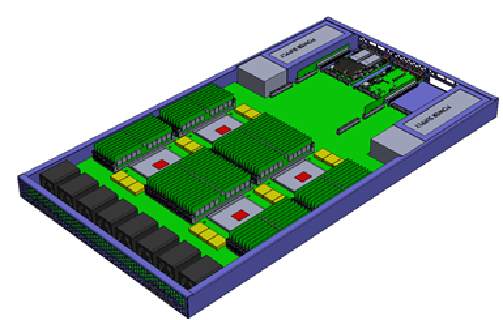
Prodigy 1U Platform 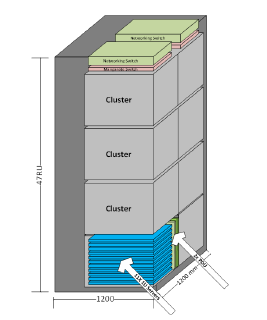
Prodigy 1U Cabinet Diagram 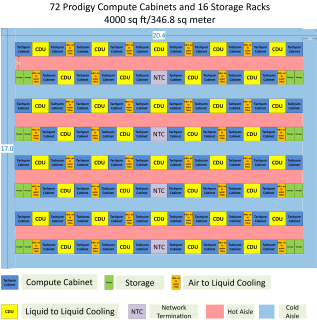
Prodigy Floor Plan For 4000 sq ft area 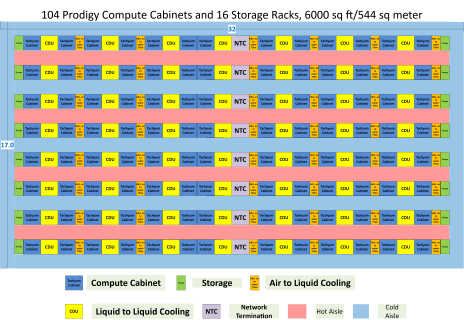
Prodigy Floor Plan For 6000 sq ft area 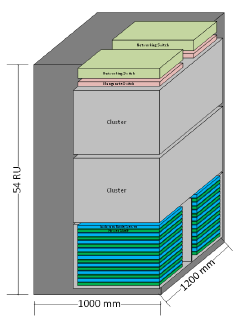
Prodigy 2 Cabinet With 48 Server Nodes, TOR and Management Switches 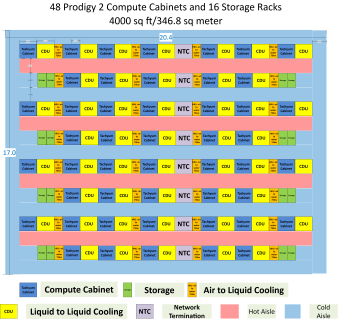
Prodigy 2 Cabinet 4000 sq ft Footprint 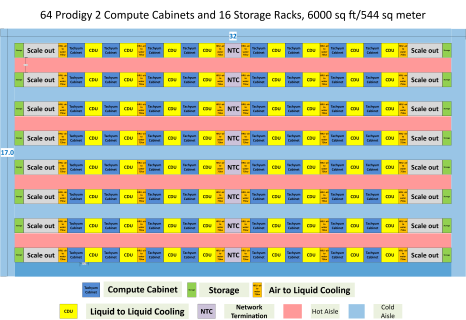
Prodigy 2 Cabinet 6000 sq ft Footprint 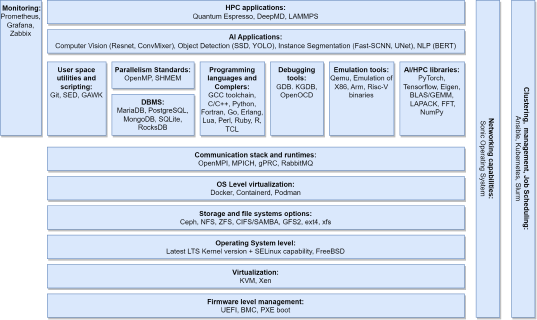
Tachyum HPC/AI Software Stack
Let's get to know each other
To download Tachyum Prodigy Universal Processor Enabling Next Generation 20+ EF Supercomputers, please enter your e-mail address below.
We will not send you any unwanted messages. We just want to know who our audience is.
Read our Privacy Policy
